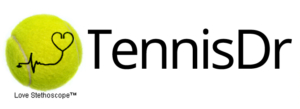A couple courts away, I heard “friends” in a heated discussion about a line call.
When they emailed me about the USTA rule that applies I wrote this in response:
For over 20 years now we have known from research in sports medicine and orthoptics that the brain is only piecing together images of a tennis ball during its travels. Essentially, above about 30 mph, the human brain is guessing at what it sees of the path of a tennis ball. Please see the section called “Biomechanics” at TennisDr.com for citations/details.
Still many players, even some of my students who know these facts, have difficulty conceding such frailty in the human visual system. They are convinced that their opinion is the correct opinion. Often, their off court business affairs hinge on one minor point to gain the advantage or maintain a successful campaign or account. These sensibilities can be difficult to leave at the office.
To maintain friendships, my job as their coach is to teach them how to be generous with points, respect that others views are scientifically PROVEN to be as valid, or more valid than our own, and maintain the spirit of camaraderie that is the reason for “playing” together in the first place.
In short, line calling rule number this or that, SHOULD only matter to those making a living playing competitive tennis, IF anyone!
What matters for the rest of us, is that the widest variety of people will enjoy “playing” with us in the future AND that the strength of our character is above wanting this or that particular point, which never really matters in the outcome of a match anyway.
This is not work. Humans play to have fun.
Sincerely,
TennisDr
